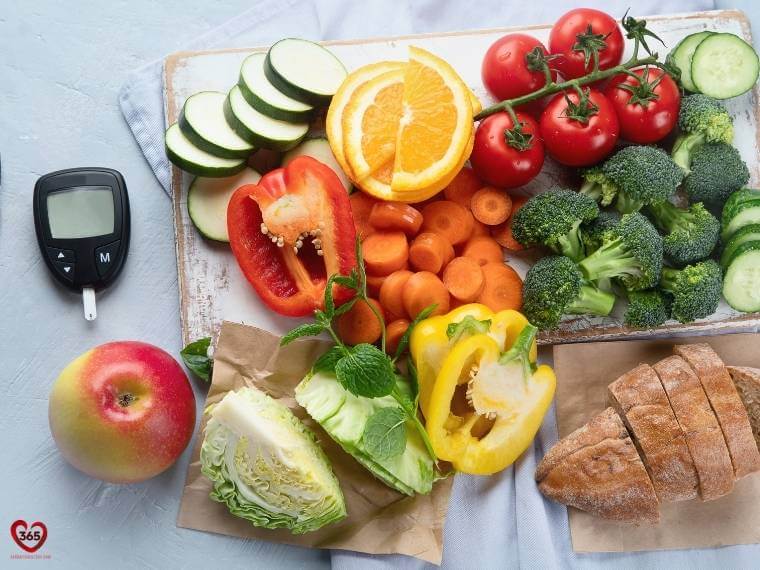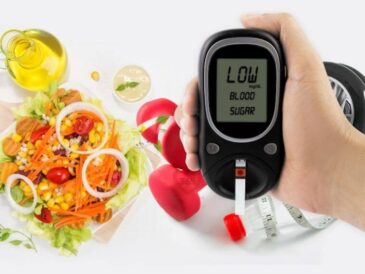Discover 10 practical tips for healthy eating with diabetes. Control blood glucose, improve heart health, and enjoy balanced meals every day.
There are different types of diabetes, and no two people with diabetes are the same. So there isn’t a one-size-fits-all “diabetes diet” for everyone. But these tips can help you make healthier food choices.
These are Healthy Eating Tips for Diabetes that can guide your everyday food decisions.
1. Choose Healthier Carbohydrates
All carbs affect blood glucose levels, so it’s important to know which foods contain carbohydrates. Choose healthier sources and be mindful of portions.
Healthy sources of carbs:
- Whole grains like brown rice, buckwheat, and whole oats
- Fruit
- Vegetables
- Pulses such as chickpeas, beans, and lentils
- Dairy like unsweetened yogurt and milk
Avoid low-fiber carbs like white bread, white rice, and processed cereals. Check food labels to choose high-fiber options.
2. Eat Less Salt
Too much salt raises your risk of high blood pressure, which increases your risk of heart disease and stroke. Diabetes already puts you at higher risk.
Limit salt intake to 6g (1 teaspoon) per day. Check labels and choose lower-salt options. Cooking from scratch helps control salt. Use herbs and spices for flavor instead
3. Eat Less Red and Processed Meat
If you reduce carbs, avoid filling up on red or processed meats like ham, bacon, sausages, beef, and lamb. These are linked to heart disease and some cancers.
Swap with:
- Pulses like beans and lentils
- Fish
- Eggs
- Poultry like chicken and turkey
- Unsalted nuts
4. Eat More Fruit and Vegetables
Fruits and vegetables provide essential vitamins, minerals, and fiber. Aim to include more with meals and as snacks.
Worried about sugar in fruit? Whole fruit contains natural sugar, which is different from added (free) sugars in sweets and processed foods. Avoid juices; go for whole fruit – fresh, frozen, dried, or canned (in juice, not syrup). Spread fruit intake throughout the day.
5. Choose Healthier Fats
Fat provides energy, but the type of fat matters.
Healthier fats are found in:
- Unsalted nuts
- Seeds
- Avocados
- Oily fish
- Olive, rapeseed, and sunflower oils
Limit saturated fats found in:
- Ghee, butter, lard
- Red and processed meat
- Biscuits, cakes, pies, pastries
Try grilling, steaming, or baking instead of frying.
6. Cut Down on Added Sugar
Cutting sugar is tough at first. Start with small swaps like:
- Replace sugary drinks and juices with water, milk, or unsweetened tea/coffee
- Try low or zero-calorie sweeteners
Reducing added sugar helps control blood glucose and manage weight. If you use sugary drinks to treat hypos, continue doing so but speak to your diabetes team if hypos are frequent.
7. Be Smart with Snacks
Choose healthier snacks:
- Unsalted nuts
- Seeds
- Fruits
- Vegetables
- Yogurts
Watch portion sizes to support weight management.
8. Drink Alcohol Sensibly
Alcohol is high in calories. Limit to 14 units per week and avoid binge drinking. Have alcohol-free days each week.
If you take insulin or other diabetes medications, avoid drinking on an empty stomach as it may cause low blood sugar.
9. Avoid “Diabetic” Foods
Products labeled as “diabetic” are no longer legally approved claims. These often offer no health benefits and may contain just as much fat and calories as regular versions. They can also have a laxative effect.
10. Get Vitamins and Minerals from Food
Supplements aren’t proven to help diabetes unless prescribed. Get nutrients from a variety of foods.
Some supplements may interfere with medications or worsen complications like kidney disease.
Final Tip: Stay Active
Physical activity supports healthy eating. It helps muscles use glucose and improves insulin sensitivity, lowering the risk of heart disease.
With these 10 practical tips, you can manage diabetes effectively and live a healthier, more balanced life – without extreme diets or restrictions.
Video: 10 Brown Foods That Can Help Control Blood Sugar


